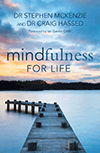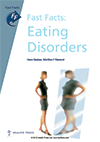Mindfulness for life
Stephen McKenzie
Craig Hassed
Australia: Exisle Publishing, 2012
ISBN 978 1 921966 03 3 $29.99
 Mindfulness, or ‘paying attention in a particular way; on purpose, in the present moment, and non-judgementally’1 has caught on in many areas of Western medicine in recent years, and with good reason. However, as Stephen McKenzie and Craig Hassed point out in their book, Mindfulness for Life, mindfulness is not new: Eastern traditions have been practicing it for centuries and even early Western civilisations, like the ancient Greeks and Jewish, Christian and Sufi traditions, recognised the value of stilling the mind. The book also describes mindfulness as a natural human state and a place we all find ourselves from time-to-time by accident, times when we are utterly focused, like when watching a sunset, or dealing with a sudden emergency. By firmly placing mindfulness in the bag of tools of all human beings, the authors make the powerful point that mindfulness is accessible to everyone, that it is as close as the next breath.
Mindfulness, or ‘paying attention in a particular way; on purpose, in the present moment, and non-judgementally’1 has caught on in many areas of Western medicine in recent years, and with good reason. However, as Stephen McKenzie and Craig Hassed point out in their book, Mindfulness for Life, mindfulness is not new: Eastern traditions have been practicing it for centuries and even early Western civilisations, like the ancient Greeks and Jewish, Christian and Sufi traditions, recognised the value of stilling the mind. The book also describes mindfulness as a natural human state and a place we all find ourselves from time-to-time by accident, times when we are utterly focused, like when watching a sunset, or dealing with a sudden emergency. By firmly placing mindfulness in the bag of tools of all human beings, the authors make the powerful point that mindfulness is accessible to everyone, that it is as close as the next breath.
Part 1 of Mindfulness for Life speaks to anyone who might have an interest in mindfulness. It draws together what is known about mindfulness, what practicing it looks like, including both formal and informal practice, and the possibilities that mindfulness can offer in terms of clear-seeing or reality and our thoughts and the power of non-judgemental acceptance. The following two sections are about the applications of mindfulness to different health and life issues including depression, addiction, pain, sporting performance and parenting and the final section looks at how mindfulness relates to happiness and different aspects of spirituality.
Mindfulness for Life is an easy-to-read and comprehensive look at mindfulness, its practice and its applications from authors who are clearly on top of the research in this area. Refreshingly, the authors are also self-effacing and honest about their own experiences with both formal mindful practice and mindful living. Their anecdotes illustrate that the path to a more mindful life is not without its pitfalls and that embarking on it requires persistence, humour and self-compassion.
Dr Kath O’Connor
Castlemaine, Vic
Fast facts: Eating disorders
Hans Steiner
Martine F Flament
United Kingdom: Health Press Limited, 2012
ISBN 978 1903 734 919, $25.00
 Fast Facts: Eating Disorders provides a comprehensive and practical overview of the current knowledge in the field of eating disorders.
Fast Facts: Eating Disorders provides a comprehensive and practical overview of the current knowledge in the field of eating disorders.
In this handbook, eating disorders are broadly divided into three categories:
- anorexia nervosa
- bulimia nervosa
- ‘related disorders’.
The authors summarise the current evidence underpinning the diagnosis and treatment of eating disorders and detail the physical symptoms and behavioural signs to look for in the patient with a suspected eating disorder. They have successfully highlighted how eating disorders are classic ‘psychosomatic’ syndromes and cleverly associate between the pathological thoughts and emotions concerning appearance, eating and food.
Areas covered in ‘Eating disorders’ that would be useful to the general practitioner include: screening tools and questions to ask the patient, diagnosis, laboratory tests, general management and treatment options.
Fast Facts: Eating Disorders also outlines the important role of the primary care team in initial screening for an eating disorder, diagnosis of the eating disorder, working with the treatment team, providing essential therapeutic services and monitoring of the patient. Information is covered succinctly and highlights the key principles for the general management of each condition. There is also a useful reference list and key points summaries and tables for those who are only after the ‘fast facts’.
Overall, Fast Facts: Eating Disorders may be useful in the clinical setting, where doctors are frequently confronted with the problems associated with the diagnosis and treatment of an eating disorder in their patients.
Ms Manjri Raval
Melbourne, Vic